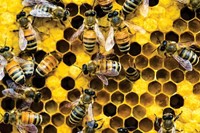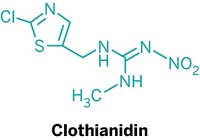Advertisement
Grab your lab coat. Let's get started
Welcome!
Welcome!
Create an account below to get 6 C&EN articles per month, receive newsletters and more - all free.
It seems this is your first time logging in online. Please enter the following information to continue.
As an ACS member you automatically get access to this site. All we need is few more details to create your reading experience.
Not you? Sign in with a different account.
Not you? Sign in with a different account.
ERROR 1
ERROR 1
ERROR 2
ERROR 2
ERROR 2
ERROR 2
ERROR 2
Password and Confirm password must match.
If you have an ACS member number, please enter it here so we can link this account to your membership. (optional)
ERROR 2
ACS values your privacy. By submitting your information, you are gaining access to C&EN and subscribing to our weekly newsletter. We use the information you provide to make your reading experience better, and we will never sell your data to third party members.
Pesticides
Glyphosate disrupts honey bee gut bacteria
Weed killer’s microbiome effects could contribute to honey bee decline, researchers say
by Megha Satyanarayana
September 25, 2018

Glyphosate is among the most widely used agricultural chemicals in the world, and the companies that make it describe it as safer and more environmentally-friendly than other herbicides.
But a group of researchers in Texas now report that the weed killer, sold as Roundup, could harm honeybees indirectly by disrupting the bacteria in their guts (Proc. Natl. Acad. Sci. USA 2018, DOI: 10.1073/pnas.1803880115). The scientists think the findings could help explain the decline in honeybees observed over the past decade or so.
The team, led by Nancy Moran, an expert in bee biology at the University of Texas, Austin, treated hundreds of worker bees with glyphosate at concentrations they might encounter while foraging near agricultural fields, reintroduced them into their hive, and then analyzed the gut bacteria of treated and untreated bees in the hive. After three days, the researchers found that the abundance of some of the eight predominant species fell in treated bees compared with untreated ones, suggesting that exposure to glyphosate changed the composition of the bees’ guts. When challenged with a common bee pathogen, the worker bees exposed to glyphosate died at higher rates than unexposed bees, suggesting that the bacterial shake-up made the insects more vulnerable.

The conclusions match previous reports demonstrating that honeybees with compromised gut flora are malnourished and susceptible to infection. Those findings, along with data showing that glyphosate can affect soil bacteria and accumulate in bee honey and hives, indicate that researchers should explore whether possible off-target effects of the popular herbicide have played a role in honey bee decline, Moran says.
About 10 years ago, there was a noted die-off of honeybees, later termed colony collapse disorder. Mortality rates have continued to be high, Moran says, but the die-offs haven’t been as sudden. Researchers have been looking at the role of pesticides and fungicides in the decline, as well as infection. But glyphosate hasn’t really been part of those earlier conversations, says Fred Gould, an entomologist and plant pathologist at North Carolina State University. The field, he says, is “getting better at looking for subtle off-target effects,” such as those described in the new study.
As an herbicide, glyphosate works by blocking an enzyme called EPSP synthase in plants and microbes needed to create aromatic amino acids like phenylalanine and tryptophan. Glyphosate doesn’t kill microbes, but it keeps them from growing, and most bacteria found in bee guts carry the gene for the enzyme.
But while some species of bacteria in bee guts were susceptible to glyphosate, others were less so, either because they carried a gene for a glyphosate-resistant version of EPSPS, or because of other unknown mechanisms, Moran says. Her group next plans to repeat their experiments on whole hives, and to explore the nonEPSPS resistance mechanisms.
The environmental impact and health effects of glyphosate form a contentious issue, Gould says, so whole hive studies could shed light on the herbicide’s effects on a critical species for agriculture.
These studies also could help guide how to avoid possible negative effects of glyphosate on honeybees. The likely outcome will be some sort of best practices on when and where to spray glyphosate, says Juliana Rangel, an entomologist at Texas A&M University. Pollination via honeybees is an approximately $15 billion per year industry, she says, and “a lot of times, these tragedies can be avoided with a better understanding of the system.”





Join the conversation
Contact the reporter
Submit a Letter to the Editor for publication
Engage with us on Twitter